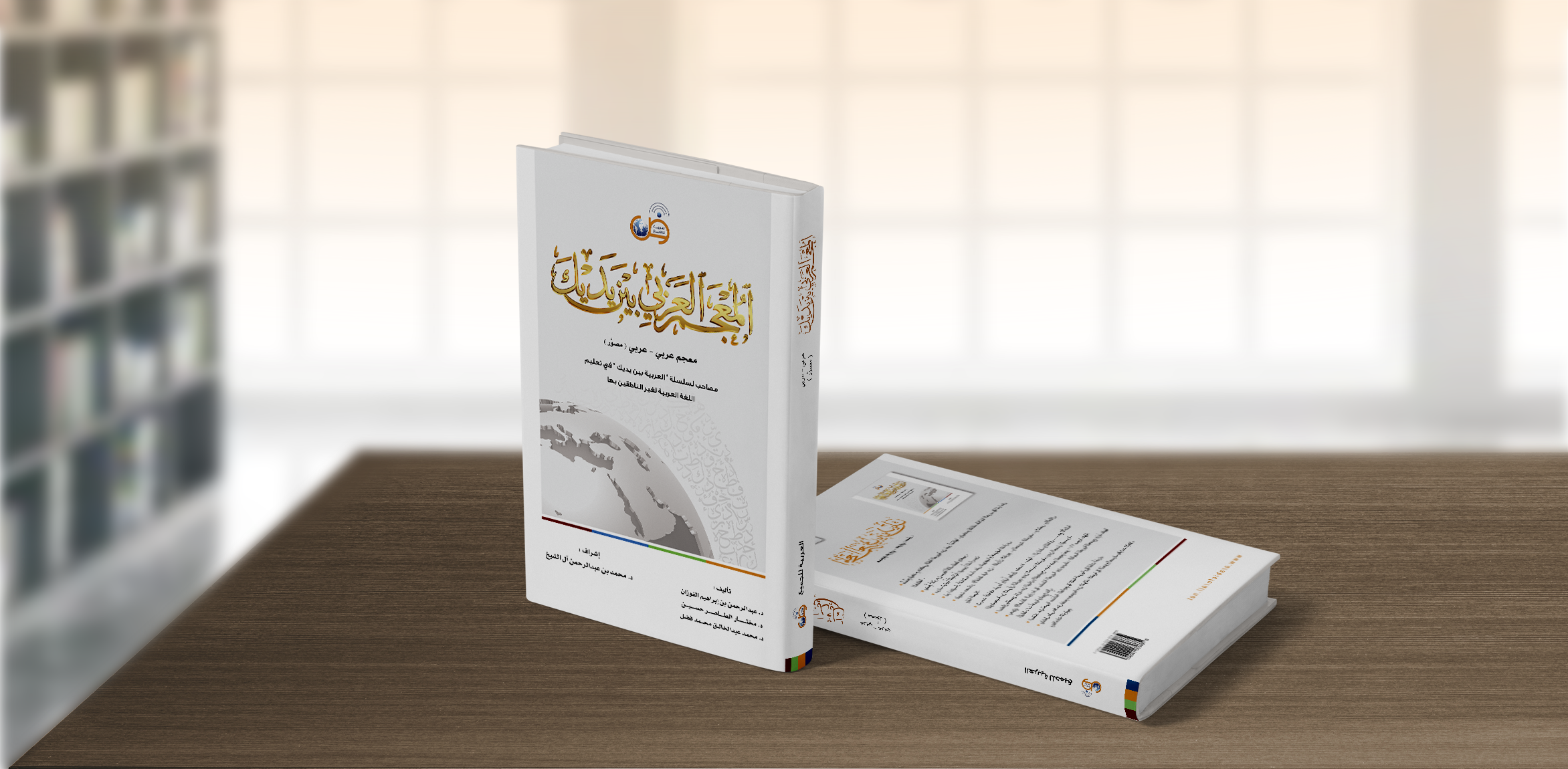Arabic dictionary in your hands:
The Arabic lexical industry began in the seventh century AD for religious reasons. It was initially compiled to explain the Qur’an and the hadith. The first Arabic lexicon was the book of Al-Ain by Khalil
bin Ahmad Al-Farahidi. Other dictionaries that were placed for the people of the language followed. However, due to the spread of Arabic and the need for learners other than its people to learn it, the
dictionaries originally designed for Arabs were unable to fulfill the demands of studying Arabic, without its people and their needs. So it was necessary to compose lexicons directed to these scholars in the
first place; It takes into account their needs and levels and makes it easy for them to search for words, by arranging entries uncharacteristically in the old dictionaries, which depend on the order according to
the principles (roots of words) followed by all their derivatives.
This dictionary included all the words that were mentioned in the Arabic Between Your Hands series of Arabia for All project. And add to it common and important words; Until the total entries of the dictionary
reached 7600 words.
Our approach, as we have added from the entries of the spread of the word and the importance of; Then, in the addition stage, we did not include the expressions that, with the linguistic development, became
abandoned or dead, and we neglected the old meanings of words that are still used if those meanings were abandoned or their use decreased. We have become at home and indeed have benefited a lot from the basic
Arabic dictionary and other dictionaries.
The features of the Arabic dictionary in your hands:
1- The entries are arranged alphabetically (verbally) according to the order of letters, not according to the root or the abstract origin.
2- If the entry is a verb (past), then its presence is immediately followed by an exact eye, followed by the source.
3- If the word has more than one meaning, separate the meanings with numbers in parentheses, thus (1), (2) ... etc. bearing in mind that we did not list all the meanings, but we were satisfied with the most
famous and most important of them. In this regard, we presented the true meaning over the figurative, and the sensuous over the moral (abstract).
4- If the entry is a source, then it is referred to as the verb (and we were satisfied with the most important and most common sources).
5- If the entry is a plural of fracturing, it is referred to as the singular.
6- If the entry is a feminine noun (and this is a little) it is referred to the masculine.
7- There is no consideration of stress in arranging materials; The stressed letter was treated as one letter.
8- The definition was omitted from the entries, but it was proven in parentheses in the words that change the way they are drawn when deleting (the) and also when that is necessary, as the names of God
9- The letter (ى) is placed directly before the letter (ي), and not after (ا).
10 - The letter (ت) is given before the letter (ة).
11- We cited a number of Arab proverbs where that was important.
12- Varying the style of explaining the vocabulary as appropriate; In some, it was the image, drawing, or figure, and in some, it was the synonym or contrast, or context, explanation, definition, or the
combination of more than one style. The dictionary contained nearly 1,600 illustrations. To show some meanings.
13- The meanings mentioned are strengthened by verses from the Holy Qur’an because we believe that the Muslim scholar can relate the new word to its meaning in the Qur’an. The verses came in the last
examples to be called upon to comprehend them.
14-We used some symbols
We have concluded the dictionary with an appendix that includes a set of linguistic benefits: In grammar, morphology, spelling, and punctuation.


